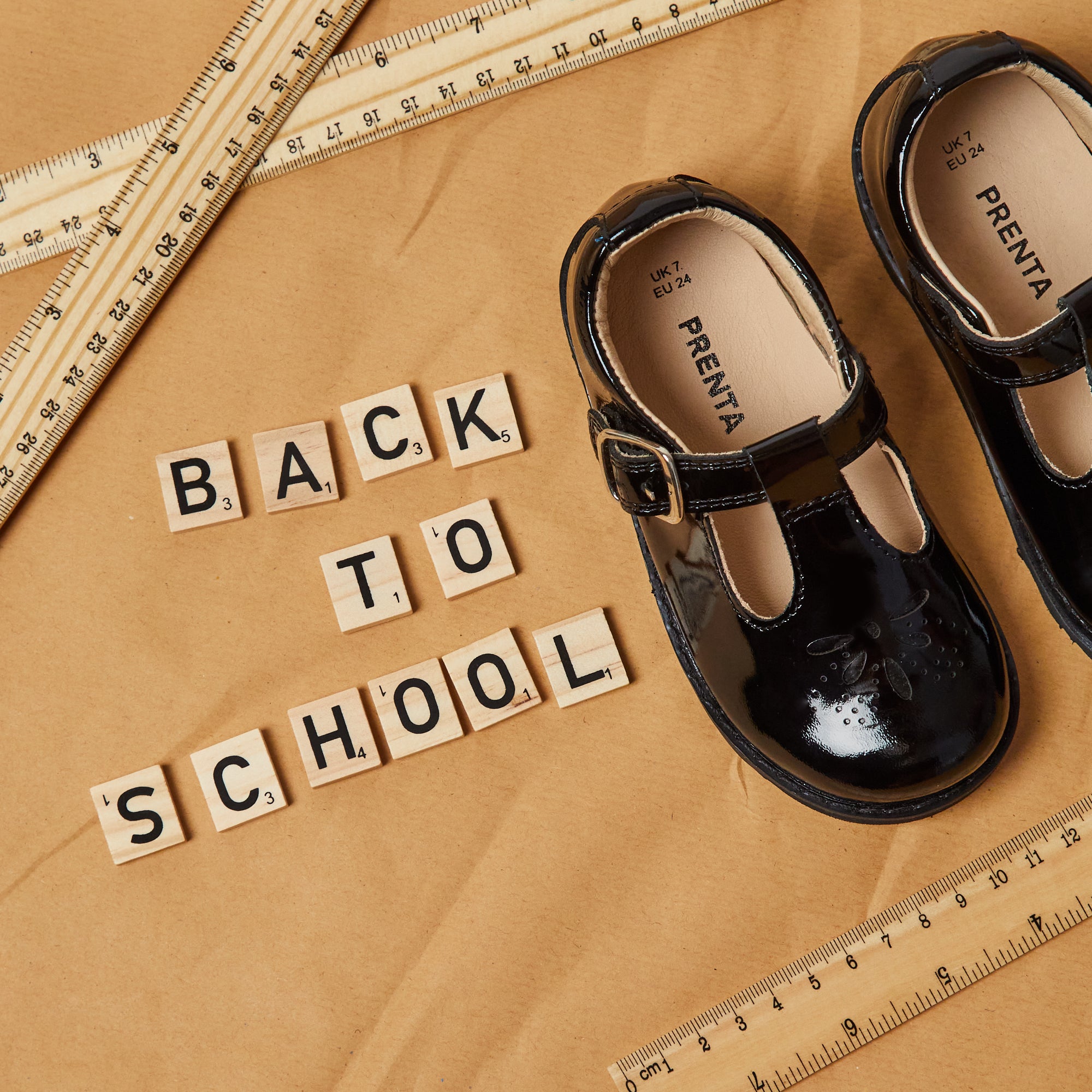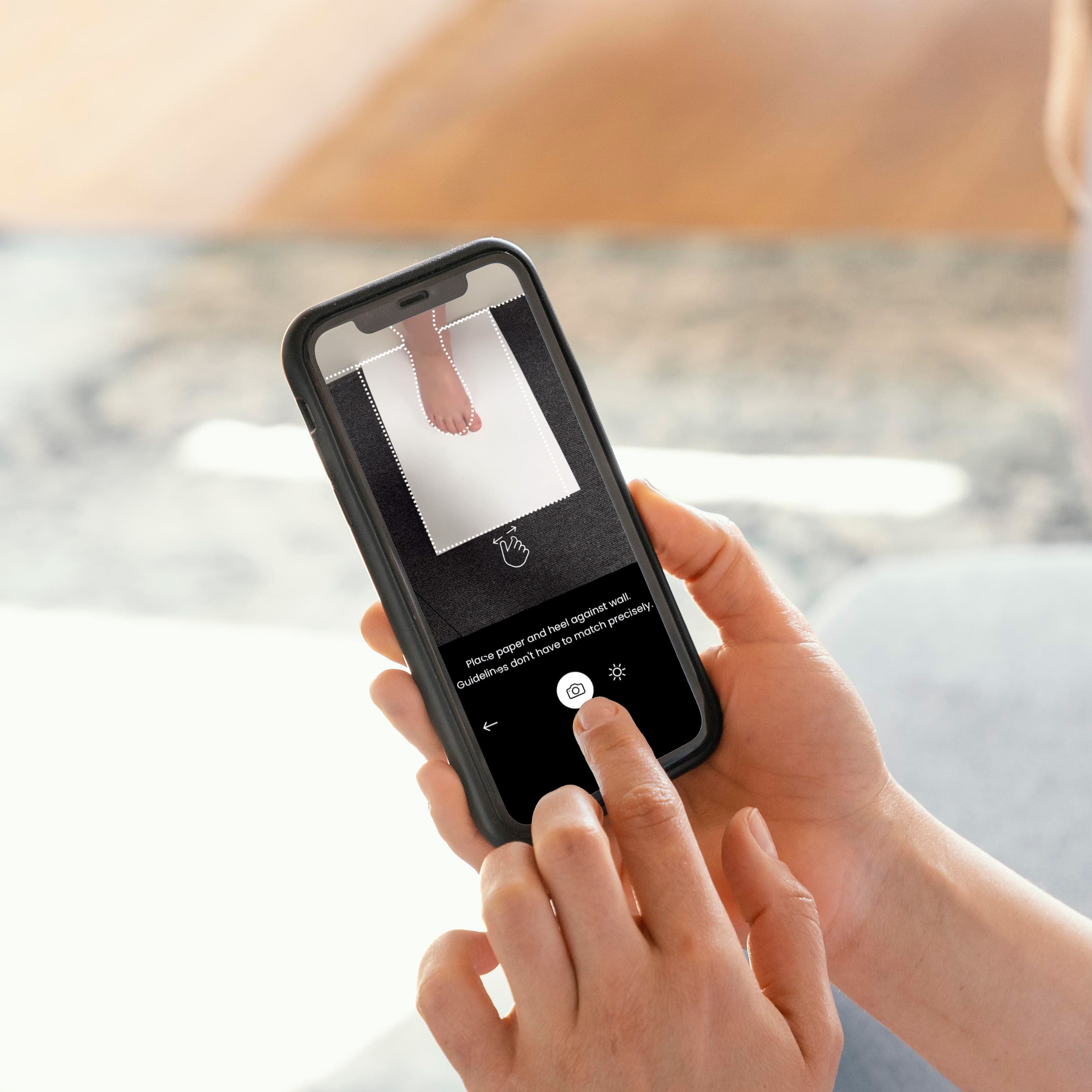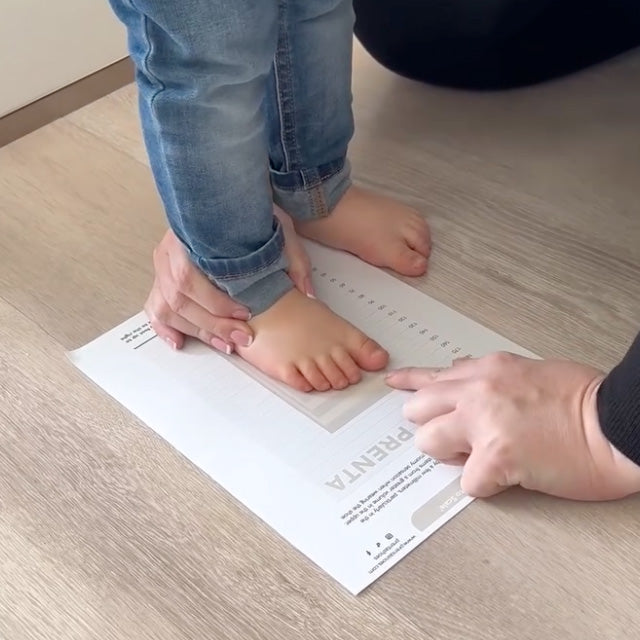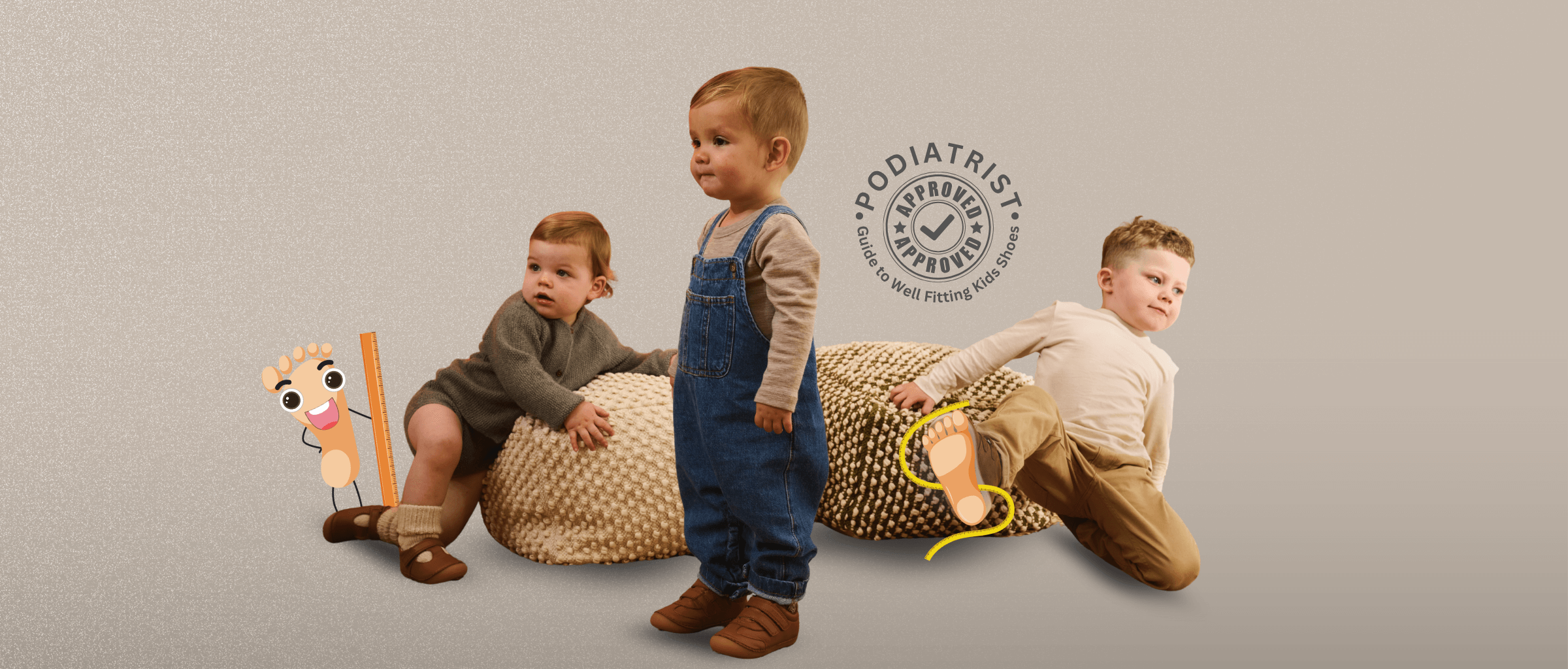Kids' feet are much more fragile and complex than adults’ feet. As a result, the footwear you buy for your children needs to reflect this by being crafted by experts and approved by podiatrists, incorporating features which actually benefit foot health and development.
Check out our guide for finding high quality and well fitting kids shoes.
Can a podiatrist help with kids shoe fitting?
A podiatrist can definitely help with kids shoe fitting, because they know what is needed to support the development of feet in a healthy manner. At Prenta Shoes, all of our shoe designs are approved by our podiatrist, as is all of our advice around finding the right fit for your child.
Our podiatrist suggests that you should keep your children barefoot as much as possible whilst they’re learning to walk; but when you do need them to be wearing shoes, they should be shoes which are lightweight and ultra-flexible, giving a ‘barefoot’ effect.
All kids shoes should also have plenty of room around the toes, which is why we’ve incorporated a ‘happy toe zone’ into the removable insoles of all of our shoes, allowing you to regularly check that the shoes are the ideal size for your child.
What makes a good shoe for children?
Good shoes for children should include the following features:
-
Appropriate level of protection and support - Depending on the age/development stage, kids shoes need varying levels of support and flexibility (More on this below).
-
Secure fastening - Whilst not particularly tight, shoes need to be securely fastened, so they don’t slip off the feet. Long straps allow for adjustable fits and accommodate wider feet.
-
Toe room for growth - A small amount of room should be left at the tip of the shoes. This allows for growth, and eliminates restriction.
-
Contoured fit - Our podiatrist suggests that shoes should contour round the foot.
-
Removable insoles - These allow for more customisation and support, so you can facilitate an adjustable fit with specialist insoles.
When you start getting to school shoe ages, it’s possibly even more important to find good shoes for your child. Starting school means your child is likely to be more consistently active on a daily basis. With bones becoming stronger around this stage, but still in the process of fusing together, it’s important that we provide shoes which are lightweight and flexible so as to avoid discomfort and support natural movement.
How to check your child’s shoes are well-fitting
To check your child’s shoes are well-fitting, you should consider a few things. Primarily, you want to check the amount of toe space your child has. Is there enough width in the toe box/area of the shoes? Also, is there some growing room allowing toes to grow into? A great way to do this is by using the Prenta shoes ‘happy toe zone’ feature.
Another way to check your child’s shoes are the right fit is by checking the area round the heel. Heels should be snug without slipping, but not so tight that there is too much friction or rubbing around this area.
You should also check that shoes contour the foot.
Podiatrist advice on well fitting kids shoes
According to our podiatrist, the required amount of support varies depending on the stage of each child. Children in the first walking stage need shoes which are flexible.
When they’re in the early stages of walking and continuing to develop, kids shoes still need to be unrestrictive, but feature a little bit more support.
Check out our range of boys shoes and girls shoes which match podiatrist recommendations.
Our podiatrist also suggests that you should avoid solely prioritising fashion-based footwear, and regard healthy development as equally important. Prenta shoes combine these two elements to deliver cute, fashionable shoes which match the recommended needs of expert podiatrists.
Shoes should be comfortable from the very start, and shouldn’t need ‘breaking in’ or similar. This myth is actually damaging to children’s feet, because shoes which are uncomfortable from the start are either too tight, not flexible enough, or not offering the right kind of support.





